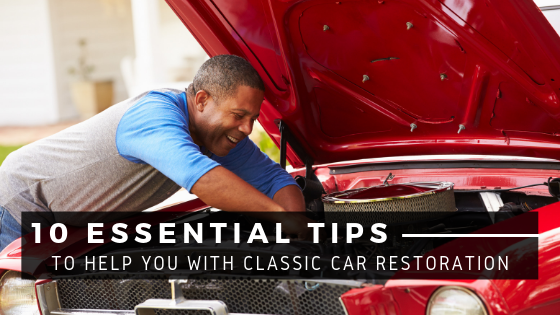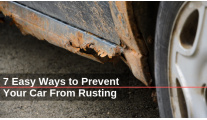
Citation: © [Monkey Business]/Adobe Stock
Classic car restoration can be an incredibly rewarding experience for car aficionados. How cool does it look when you see a car from another time on the roads today? You know that someone took the time and effort to resurrect that vintage vehicle. Although cars evolve over the years, some models maintain a timeless look that car enthusiasts dream of one day driving.
If you are one of these people, use our guide on classic car restoration and make your dreams a reality.
Obtain a Restoration Manual
Before you begin the restoration process, find a manual to guide you through the repair. These guidebooks come in handy because they offer information specifically for the type of model you’re working on. Not only will a manual help you out if you ever run into problems, but we also recommend joining an online community of other car fanatics who are interested in vehicle restoration.
Evaluate the Car’s Condition
From this point, you’ll need to decide what kind of work you will need to perform. This all depends on the condition of the vehicle. Maybe the old car is full of rust or has damage from an accident. Or perhaps the body is in good condition, but the car doesn’t run well. All of these factors will play a role in restoring your car, which will lead to deciding how much time you’ll need, what parts you’ll need to purchase, and how much money you’ll need to spend.
Prepare a Budget
This is a crucial step in making your restoration a reality. Once you finish assessing your vehicle and know what you need to repair, you’ll need to form a budget based on the parts, accessories, wheels, tires, doors, panels, paint touch up kit, and any professional work. Once you’ve calculated this figure, add 30 percent to it to ensure you have enough money. Now that you have a budget sorted out, you are ready to start making any necessary purchases.
Determine a Work Schedule
When it comes to determining a work schedule, we recommend choosing an end date. From there, create a timeline of when you would like to meet certain goals within the time frame you’ve set; plan out which parts of the car you will work on each day. Be sure to give yourself the necessary amount of time to ensure you don’t rush the restoration process. You should also find a place to do work such as a garage—this will provide a large enough space and keep the car safe from undesirable weather conditions.
Recognize Your Limits
Restoring an older car is a whole different beast when compared to doing work on your everyday vehicle. Be honest with yourself and figure out what you can and cannot do. While doing it yourself will save you money, some mistakes can make the renovation costlier. If you are new to restoring vehicles, take it to a local mechanic or work on it with a knowledgeable friend.
Choose a Type of Restoration
There are four different types of car restoration:
- Driver restoration – this will get an old car back on the road. This type of restoration will only require operational and cosmetic work.
- Street show restoration – this will require a bit more work that will lead to major and minor aesthetic repairs.
- Show car restoration – this typically calls for some professional work. Those who utilize this type of restoration don’t plan on putting the car back on the road.
- Concours condition – this will be the highest level of restoration you can do. Typically, professionals handle this type of restoration because it is meant for auto shows or private collectors.
Locate Necessary Parts
Before purchasing any parts, you’ll need to decide how authentic you want to the restored car to be. Original parts and conventional parts come at different price points; your decision will affect your overall budget. Plus, although original parts will keep the car authentic, they may be harder to obtain. Do your best to figure out which parts don’t need to be authentic, so you can get them at a lower price—keeping the cost of your restoration project as low as possible.
Update the Safety Equipment
A common update many will need to make during car restoration is the safety equipment. If you intend on taking an old car back on the road, you need to ensure it meets all of the current safety laws and regulations. Chances are an older car probably doesn’t have airbags or seatbelts, so you will have to add them to your vehicle to keep your passengers safe in an event of an accident.
Modernize the Classic Car
Putting work into a classic car gives you the opportunity to add some cool features. Along with basic air conditioning, many car enthusiasts add electronics, such as the radio, to their restored classic car. You can even take it to the next level by installing Bluetooth connectivity, satellite tv, rearview cameras, and more. By adding these awesome upgrades to the interior of the car, you’re still able to maintain the classic feel on the outside—making your vehicle one-of-a-kind.
Don’t Expect to Resell it
Make sure you are restoring your car for the right reasons. The restoration process will be expensive and require a lot of hard work. If your end goal is to make money off the vehicle, we suggest finding a buyer beforehand. While vintage vehicles can be expensive, this doesn’t guarantee that you’ll break even on the process. To be safe, expect to spend more money on restoring than selling it.
Car restoration can be a challenging process. Odds are you will run into issues here and there, but don’t let these minor incidents stress you out. Be ready for things to not go as planned—especially if it is your first time. By using our guide, you can avoid major setbacks during the restoration process.



